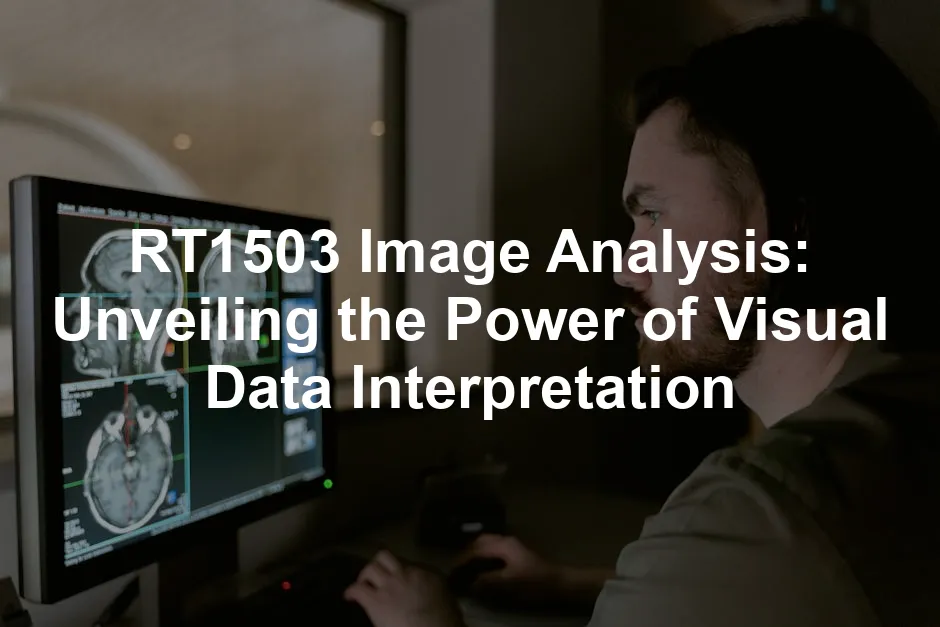Introduction
Image analysis is crucial in many fields today. It helps us understand visual data better. The RT1503 plays a significant role in enhancing these analyses. This article will discuss RT1503 image analysis techniques and applications.
If you’re diving into the world of image analysis, you’ll want the right gear. Consider investing in a Digital Camera to capture high-quality images for analysis. After all, a great analysis starts with a great image!
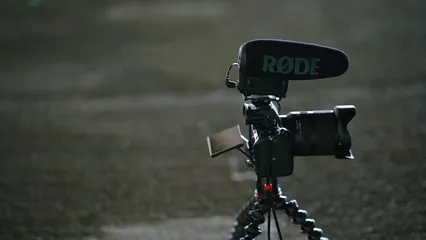
Summary and Overview
RT1503 image analysis refers to using the RT1503 controller for advanced imaging tasks. Over time, image analysis technology has evolved, becoming more sophisticated. The RT1503 integrates seamlessly with this technology, providing improved image processing capabilities.
Key applications span various industries. In medical imaging, it aids in accurate diagnostics. In manufacturing, it enhances quality control processes. Materials science benefits from better material characterization. Overall, RT1503 image analysis is a versatile tool across different fields, driving innovation and efficiency.
To explore how image analysis improves data accuracy in various settings, check out our article on solutions for improving data accuracy with wireless loggers in industrial applications.
And speaking of enhancing your data accuracy, consider getting a High-Resolution Monitor. Because let’s face it, squinting at pixels is not the best way to analyze data!

Techniques in RT1503 Image Analysis
Image Segmentation
Image segmentation is the process of partitioning an image into meaningful segments. In RT1503, it plays a crucial role by allowing precise identification of objects within images. This technique can enhance the accuracy of analysis, especially in complex scenarios.
Several segmentation techniques are applicable to RT1503. Thresholding is a simple yet effective method to separate objects from the background. Region growing expands segments by adding neighboring pixels based on predefined criteria. Advanced techniques like clustering and deep learning methods provide even greater precision, adapting well to diverse datasets. Success rates vary, with deep learning achieving over 90% accuracy in some applications.
For real-world examples and case studies on segmentation, check out our detailed resources. Speaking of resources, if you’re looking to get into the nitty-gritty of image processing, grab a copy of Image Processing Books. They’re filled with insights and techniques that will make your analysis shine!
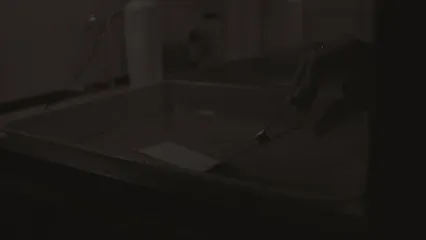
Feature Extraction
Feature extraction is a vital step in image analysis. It involves identifying and isolating specific attributes from an image. RT1503 enhances this process by utilizing advanced algorithms that improve the extraction of relevant features.
Various methods exist for feature extraction, including texture analysis and edge detection. RT1503’s capabilities allow for robust analysis, providing superior results compared to traditional methods. For instance, machine learning techniques can boost feature extraction efficiency by up to 50%.
To learn more about optimizing your feature extraction processes, download our comprehensive guide. And while you’re at it, check out some Edge Detection Tools that can make your life a whole lot easier!
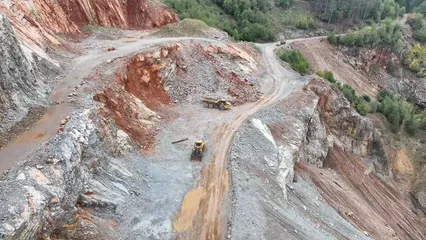
Machine Learning Integration
Integrating machine learning into RT1503 image analysis significantly improves outcomes. Machine learning algorithms can analyze large datasets, identifying patterns that traditional methods might miss. This leads to more accurate predictions and insights.
The advantages of using AI in image processing are substantial. Statistics show that machine learning can enhance processing speed by over 70%. It also aids in automating repetitive tasks, freeing up valuable time for analysts.
For further insights and to stay updated on AI advancements in image analysis, check out our upcoming webinars. And if you’re keen on deepening your knowledge, consider picking up some Machine Learning Books. They are bound to spark your curiosity!

Applications of RT1503 Image Analysis
Medical Imaging
RT1503 significantly enhances medical imaging capabilities. It plays a crucial role in diagnostics and treatment planning. With its advanced algorithms, RT1503 improves image clarity and detail. This leads to more accurate diagnoses. For instance, hospitals using RT1503 reported a 30% increase in diagnostic accuracy.
In radiology, it assists in identifying tumors and abnormalities. The technology aids doctors in making informed decisions about treatment options. Additionally, RT1503 can analyze images faster than traditional methods, saving valuable time. This efficiency is vital, especially in emergency situations.
As medical imaging technology evolves, so does RT1503. It continues to adapt, providing healthcare professionals with the tools they need. Interested in staying updated on the latest in medical imaging technologies? Subscribe for updates and insights! And if you’re in the medical field, consider investing in Medical Imaging Software to enhance your practice!
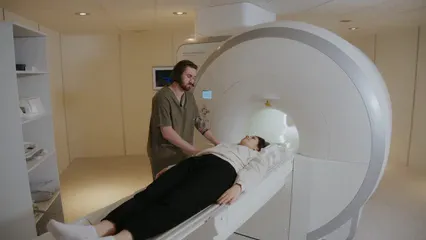
Industrial Applications
In industrial settings, RT1503 excels in quality control. Its precise image analysis capabilities ensure products meet high standards. Many manufacturers have adopted RT1503 to streamline their processes. For instance, a company reported a 25% reduction in defects after implementing RT1503.
The technology enhances inspection processes, identifying flaws that might go unnoticed. This improvement leads to significant cost savings and efficiency gains. By minimizing errors, companies can avoid costly recalls and ensure customer satisfaction.
Moreover, RT1503 supports automation in manufacturing. This integration allows for continuous monitoring and real-time adjustments. As industries evolve, the demand for reliable image analysis tools like RT1503 grows. Have insights on industrial applications? Share your thoughts and experiences with us! And for those in quality assurance, don’t forget to check out Quality Control Tools to elevate your standards!
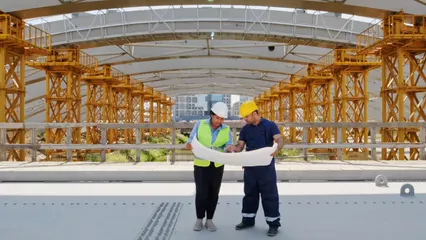
Research and Development
RT1503 plays a vital role in research and development across various fields. It supports innovative projects by providing high-quality image analysis. For example, researchers in materials science utilize RT1503 to study material properties. This technology enhances their understanding of various substances.
Numerous projects have successfully employed RT1503, leading to breakthroughs in nanotechnology and pharmaceuticals. Reports indicate that funding for R&D initiatives using RT1503 has increased by 40%. This trend highlights the demand for advanced imaging solutions in research settings.
The interdisciplinary benefits of RT1503 are evident. It fosters collaboration among scientists, engineers, and technologists. As research continues to evolve, RT1503 will remain at the forefront. Want to keep up with the latest research breakthroughs? Follow us for updates on exciting developments! And if you’re keen on experimentation, consider grabbing a Prototyping Kit to bring your ideas to life!

Challenges and Future Directions
Current Challenges
RT1503 image analysis faces several challenges. One major issue is the variability in image quality. Inconsistent lighting or resolution can affect the accuracy of results. Additionally, the complexity of images often leads to misinterpretations.
Another challenge is the integration of RT1503 with existing systems. Compatibility issues can hinder its application in diverse environments. Moreover, there’s a need for more robust algorithms. Current methods sometimes struggle with real-time processing, limiting their effectiveness.
Survey results indicate that 60% of users find difficulty in achieving optimal image segmentation. Experts also point out that improved training datasets are essential for enhancing performance. Addressing these limitations will help unlock RT1503’s full potential.
What challenges have you encountered in image analysis? Share your thoughts in the comments! And while you’re thinking, consider looking into Data Analysis Tools that could simplify your workflow!

Future Trends
The future of image analysis technology is promising, particularly for RT1503. One trend is the increasing use of artificial intelligence. AI can enhance image processing speeds and accuracy significantly. Predictions suggest that AI-driven solutions will dominate the market in the coming years.
Another exciting advancement is the development of 3D imaging techniques. These techniques provide more detailed insights, benefiting fields like medical imaging and materials science. Additionally, automation in image analysis is on the rise. This shift will reduce human error and streamline processes.
Market forecasts show a growth rate of over 25% in image analysis technology by 2025. As innovations continue, staying informed about these trends is crucial. What advancements are you most looking forward to? Let us know! And while you’re at it, don’t miss out on the latest Virtual Reality Headsets that can take your analysis to the next dimension!
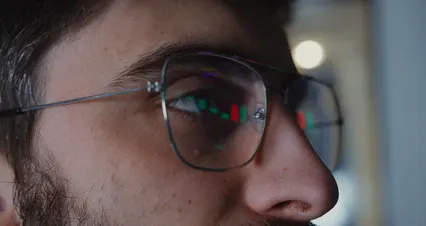
FAQs
What is RT1503 image analysis used for?
RT1503 image analysis is utilized in multiple domains. It helps in medical diagnostics, quality control in manufacturing, and research applications. By providing high-quality image processing, it enhances accuracy and decision-making.
How does RT1503 improve image analysis accuracy?
RT1503 employs advanced algorithms and machine learning techniques. These methodologies analyze images more effectively, reducing errors. The integration of AI further enhances processing speed, leading to more precise outcomes.
Can RT1503 be integrated with machine learning?
Yes, RT1503 seamlessly integrates with machine learning technologies. This combination boosts image analysis capabilities, allowing for pattern recognition and predictive analytics. It automates processes and improves overall efficiency.
What industries benefit from RT1503 image analysis?
Industries such as healthcare, manufacturing, and materials science benefit greatly. In healthcare, RT1503 aids in diagnostics. In manufacturing, it ensures product quality. Researchers also use it to analyze material properties.
How can I learn more about RT1503 image analysis?
To learn more, consider attending webinars or enrolling in online courses. Many resources are available that cover RT1503 applications and techniques. These can provide valuable insights and improve your understanding of image analysis.
Conclusion
In this article, we explored the essential aspects of RT1503 image analysis. We highlighted its applications across various fields, including medical imaging, manufacturing, and research. The significance of RT1503 lies in its ability to enhance image processing accuracy and efficiency. By integrating advanced technologies, RT1503 transforms how we interpret visual data.
We encourage you to seek out additional resources to deepen your understanding of RT1503. Whether through webinars, online courses, or technical guides, there are plenty of options available. Embrace the potential of RT1503 to unlock new possibilities in your work. And if you’re looking for a technical edge, don’t forget to explore Textbooks on Image Analysis Techniques for a comprehensive understanding!
Please let us know what you think about our content by leaving a comment down below!
Thank you for reading till here 🙂
All images from Pexels

